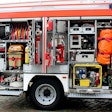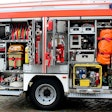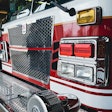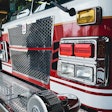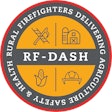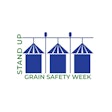
During the the Grain Elevator and Processing Society (GEAPS) Exchange 2025 educational session "Behind Closed Gates – The Reality of Railroad Safety," shedding light on the importance of rail safety protocols in grain handling facilities. Andrew Johnstone, Training Specialist at Rail Safe Training, delivered key insights and practical tips to enhance safety measures around rail cars at grain elevators.
Johnstone opened the session with a stark reminder of the industry's progress, noting, "From 1,972 fatalities in the year 1889 to 4 fatalities in the year 2023. That is a dramatic improvement." This significant reduction in fatalities underscores the importance of continued vigilance and adherence to safety protocols.
Critical safety measures
The session highlighted three key areas of focus for improving rail yard safety:
Securement: Proper securement of rail cars is crucial to prevent runaway incidents. Johnstone emphasized, "Rail cars will start moving on even the tiniest grade and they can even be pushed by wind if they're empty." He recommended a minimum of two handbrakes for every ten empty cars on flat track, with requirements increasing based on grade and tonnage.
Blue flag and red zone protection: These protocols are essential for protecting workers around rail cars. Johnstone likened blue flag protection to "the lockout tagout of the rail industry," stressing its importance in creating safe workspaces for employees working on or around equipment.
No-clearance areas: Identified as the leading cause of fatalities in the rail industry, no-clearance areas require special attention. "We consider anything within six feet of the nearest rail to be no clearance instructions," Johnstone explained, urging facilities to be vigilant about keeping these areas clear.
Practical safety tips for grain elevators
Johnstone provided several practical tips for enhancing safety at grain handling facilities:
- Implement a robust handbrake policy, considering factors such as grade, tonnage, and number of cars.
- Utilize blue flag protection, including both visual indicators and physical protection like derails or locked switches.
- Establish clear communication protocols for red zone protection during temporary work between cars.
- Clearly mark and enforce no-clearance areas, especially around structures and temporary hazards like parked trucks.
- Regularly assess and mark track clearance points to prevent collisions between rail cars on adjacent tracks.
Industry-wide challenges
The session also revealed concerning statistics from recent risk assessments. "Over 60% of the facilities that we had visited were not practicing proper securement procedures," Johnstone reported, highlighting a significant area for improvement across the industry.
The role of training and culture
Emphasizing the importance of ongoing education and a strong safety culture, Johnstone concluded, "By utilizing these practices and procedures that we teach that are available to everybody through over 150 years of learning by the growth of the community. They will enhance our safety and use them and it is up to you, you and me, us, to protect our planet."
As the grain handling industry continues to evolve, the insights shared at GEAPS Exchange 2025 serve as a crucial reminder of the ongoing need for vigilance, training, and adherence to safety protocols around rail cars. By implementing these best practices, grain elevators can significantly reduce risks and create safer working environments for all employees.
.jpg?auto=format%2Ccompress&crop=faces&fit=crop&h=48&q=70&w=48)







